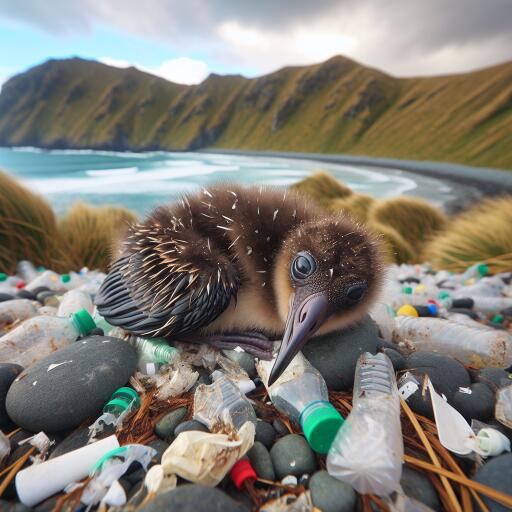
Toroa Chick Tragedy: A Stark Reminder of Plastic Pollution’s Impact
In a somber incident at Taiaroa Head’s Royal Albatross Centre, near Dunedin, a toroa chick, merely 10 days old, succumbed to ingestion of plastic, marking a sorrowful event for the conservation community. This northern royal albatross became a victim of plastic pollution when it ingested soft plastic that its parent, while foraging at sea, mistakenly fed it. This tragic occurrence was confirmed after the chick passed away at the Dunedin Wildlife Hospital, where an examination revealed the soft plastic lodged in its intestinal tract, causing a fatal blockage.
Sharyn Broni, a Department of Conservation biodiversity ranger at the site, disclosed that this was the initial incident of such nature at the Taiaroa Head colony. Despite this, concerns had been mounting over potential risks after several near misses in preceding years. “This tragic event underscores the crucial need for proper disposal of plastic waste,” Broni emphasized, urging the public to actively engage in litter cleanup efforts, especially around coastal and marine areas, to mitigate threats to seabirds.
The alarming signs were already visible. In May 2021, a plastic toy, fortunately unswallowed, was discovered amongst a chick’s nesting materials — a clear indication of the pervasive threat of plastic pollution. Broni highlighted a worrying trend: plastic remnants were found in almost all regurgitated feeds examined last season, with bottle caps being the most common, alongside other hazardous items such as plastic syringes.
Plastic pollution poses a severe risk to seabirds like the toroa, which may mistake these floating menaces for food. Algal growth on plastic can mimic the scent of actual prey, tricking these birds into consuming them. The consequence is dire, not only for the vulnerable chicks but also for adults, as ingested plastic can lead to fatal conditions like dehydration or starvation due to indigestion.
Nadia Wesley-Smith, chairperson of Te Pōari a Pukekura, voiced a poignant reminder of the broader implications of such tragedies. “The loss of this albatross chick is a powerful call to action for us all. Every discarded piece of plastic disrupts the fragile equilibrium of our ecosystems, affecting the majestic toroa and beyond,” Wesley-Smith stated, stressing the interconnectedness of human actions and environmental health.
Corroborating the urgency of this issue, Lisa Argilla, the director of Dunedin Wildlife Hospital, shared the distress felt by veterinary professionals upon discovering that plastic was the cause of the young albatross’s demise. “The obstruction caused by a seemingly insignificant piece of plastic had catastrophic consequences, leading to starvation and organ failure,” Argilla lamented. She reinforced the appeal for more conscientious plastic usage and disposal practices to prevent such needless loss of life in the future.
The toroa, recognized as one of the largest seabird species globally, is categorized as “nationally vulnerable”. This incident shines a spotlight on the broader issue of plastic pollution’s impact on wildlife and underscores the urgency for collective action in addressing this pervasive environmental threat. Through improved disposal practices and reducing plastic consumption, we have the power to make a difference in preserving these magnificent birds for generations to come.





Leave a Reply